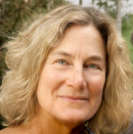
This is a complete textbook available OER written by members of my professional association.
- Subject:
- Early Childhood Development
- Material Type:
- Textbook
- Author:
- Julie Powers
- Date Added:
- 07/02/2020

This is a complete textbook available OER written by members of my professional association.
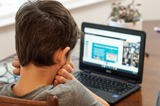
The inquiry helps students examine the responsibility of being a citizen both in the real world and the online world. In answering the compelling question “How is being a citizen online the same as being one in real life?” students will identify the attitudes and actions necessary to be a good citizen. The unit offers 12 lessons with formative performance tasks for educators to choose from depending on the age and needs of their students. Each provides students with opportunities to collect evidence and an understanding of how online behavior and boundaries are comparable to those necessary in the real world. At the end of the inquiry, students create an explanation and identify examples of the correlation between online and real life communities. Unit created by NCESD teachers: Sara Bedient, Sasha Dart, Brittany Jones, Krystina Nelson, Julia Spanjer, Keirstin Stansbury, Brittney Therriault
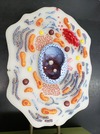
Describe the big picture of your content here
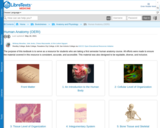
The purpose of this textbook is to serve as a resource for students who are taking a first semester human anatomy course. All efforts were made to ensure the material covered in this resource is consistent, accurate, and accessible. This material was also designed to be equitable, diverse, and inclusive.
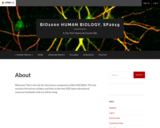
Welcome! This is the site for the lecture component of Bio1100 D854. This site contains the lecture syllabus and links to the free OER (open educational resource) textbooks that we will be using.

This article features children's literature about icebergs and glaciers.
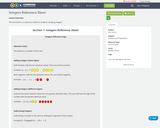
This document is a reference sheet for students studying integers.
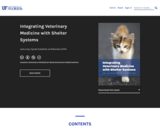
This interactive textbook provides an overview of intergrating veterinary medicine with shelter systems.
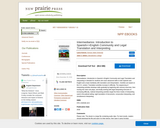
Intermediarios: Introduction to Spanish<>English Community and Legal Translation and Interpreting is intended for students who have advanced skills in both Spanish and English and a basic familiarity with translation and interpretation. Activities are based on the U.S. context. Translation activities increase in difficulty. The sequencing of interpreting activities develops skills gradually by beginning with memory exercises, then moving into class role plays, and finally working with legal interpreting exercises of increasing difficulty. Judicial interpreting activities target the three modes of interpreting used in the judicial setting: sight translation of documents, consecutive interpreting, and simultaneous interpreting.
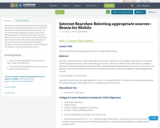
Learners are using the internet on their smart phones everyday to collect information for school or daily life. The problem is that search engines can produce an excessive number of potential sources, even when filtering the search. This lesson will teach the adult learner how to use a smart phone to define key words, specify criteria, and evaluate the appropriateness of sources. The learner will develop a customized checklist for the search and demonstrate the acquired knowledge of selecting appropriate sources.
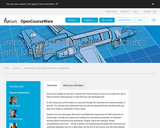
How do you design an aircraft or spacecraft? And in doing so, how do you keep the risk of failure minimal while bearing in mind that they will eventually fail?
In this course you will be taken on a journey through the structural and material design of aircraft. You will see and understand how aircraft and spacecraft are manufactured, and learn how safety is enshrined at every stage.
Experts from the Aerospace Structures and Materials Department of Delft University of Technology will help you explore and analyze the mechanical properties of materials; learning about manufacturing techniques, fatigue, loads and stresses, design considerations and more – all the scientific and engineering principles that structural and materials engineers face on a daily basis. By the end of the course, you will have learned to think like they do!
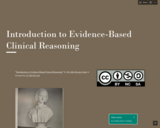
Introduction to Evidence-Based Clinical Reasoning is a collection developed for NUR 115, Evidence-Based Clinical Reasoning at Jefferson State Community College in the Alabama Community College System. The resources were selected to introduce the students to the exemplars in the
concept-based course. This course is a transition to practice course for the role of practical nurse. The course is the 4th course in the associate degree nursing program.
The presentation medium is Sway, which has accessibility features.
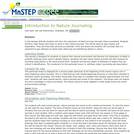
This activity is a field investigation where students will learn the importance of detail when nature journaling.

This lesson is an introduction to scale copies for Math 7 students. This is a Desmos lesson. Some images and content were obtained from Open Up Resources: Download for free at openupresources.org.
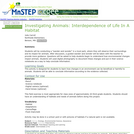
This activity is a field investigation where students will observe, discuss, and gather evidence on how environmental changes affect animals that live in that habitat.
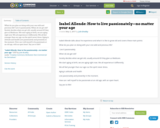
What do you plan on doing with your one wild and precious life?
Live it passionately.
When do we get old?
Society decides when we get old, usually around 65 they give us Medicare.
We start aging at birth, we are aging right now. We all experience it differently.
We all feel younger than our age cuz the spirit never dress.
Aging is attitude and health
Live passionately and presently in the moment.
How can i will myself to be passionate at an old age, with an open heart.
Say yes to life!!

This new publication by UNESCO is a timely resource and highly topical subject for all those who practice or teach journalism in this Digital Age. UNESCO's new handbook is an essential addition to teaching syllabi for all journalism educators, as well as practising journalists and editors who are interested in information, how we share it and how we use it. It is mission critical that those who practice journalism understand and report on the new threats to trusted information. Political parties, health professionals, business people, scientists, election monitors and others will also find the handbook useful in navigating the information disorder. Written by experts in the fight against disinformation, this handbook explores the very nature of journalism - with modules on why trust matters; thinking critically about how digital technology and social platforms are conduits of the information disorder; fighting back against disinformation and misinformation through media and information literacy; fact-checking 101; social media verification and combating online abuse. The seven individual modules are available online to download that enables readers to develop their own course relevant to their media environment.
This handbook is also useful for the library and information science professionals, students, and LIS educators for understanding the different dimensions of fake news and disinformation.
Table of Contents
Module One | Truth, Trust and Journalism: Why it Matters | by Cherilyn Ireton
Module Two | Thinking about "Information Disorder": Formats of Misinformation, Disinformation and Mal-Information | by Claire Wardle & Hossein Derakshan
Module Three | News Industry Transformation: Digital Technology, Social Platforms and the Spread of Misinformation and Disinformation |by Julie Posetti
Module Four | Combatting Disinformation and Misinformation Through Media and Information Literacy (MIL) | by Magda Abu-Fadil
Module Five | Fact-Checking 101 | by Alexios Mantzarlis
Module Six | Social Media Verification: Assessing Sources and Visual Content | by Tom Trewinnard and Fergus Bell
Module Seven | Combatting Online Abuse: When Journalists and Their Sources are Targeted | by Julie Posetti
Additional Resources: https://en.unesco.org/fightfakenews
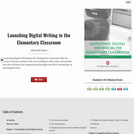
Launching Digital Writing in the Elementary Classroom tells the stories of seven teachers who were willing to take risks and venture into new territory by integrating technology into their workshops in meaningful ways.
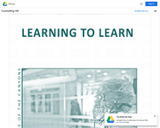
COUNS 142 at College of the Canyons
Focuses on brain-based learning strategies that develop self-regulatory learning: discovering self-motivation; gaining self-awareness; developing emotional intelligence; employing interdependence; accepting personal responsibility; applying active listening; reading and note-taking; monitoring performance; and developing a growth mindset that believes in self. Students will combine theory and practice to become successful learners and successful college students.
Lesson 1: Successful Learning Strategies, Mindsets, & Basic Brain Facts (Plasticity)
Lesson 2: Motivation, Locus of Control, and Goal Setting
Lesson 3: Self-Regulated Learning and Student Engagement
Lesson 4: Use of Time
Lesson 5: Critical Thinking, Metacognition, and Bloom’s Taxonomy
Lesson 6: Active Listening and Note-Taking from Lectures
Lesson 7: Reading to Learn
Lesson 8: Preparing for and Taking Tests
Lesson 9: Memory and Information Processing Theory
Lesson 10: The Amazing Brain
Lesson 11: Learning Theories
Lesson 12: A Healthy Mindful Brain
Lesson 13: Managing Stress, Self-Talk, and Emotional Intelligence
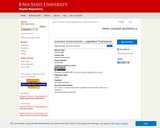
Lecture slides developed to accompany ARTID 569A: Inclusive Environments, an Interior Design course offered at Iowa State University. These slides cover the history of disability rights in the United States, design standards, and more. Questions are included within the slides for assessment.